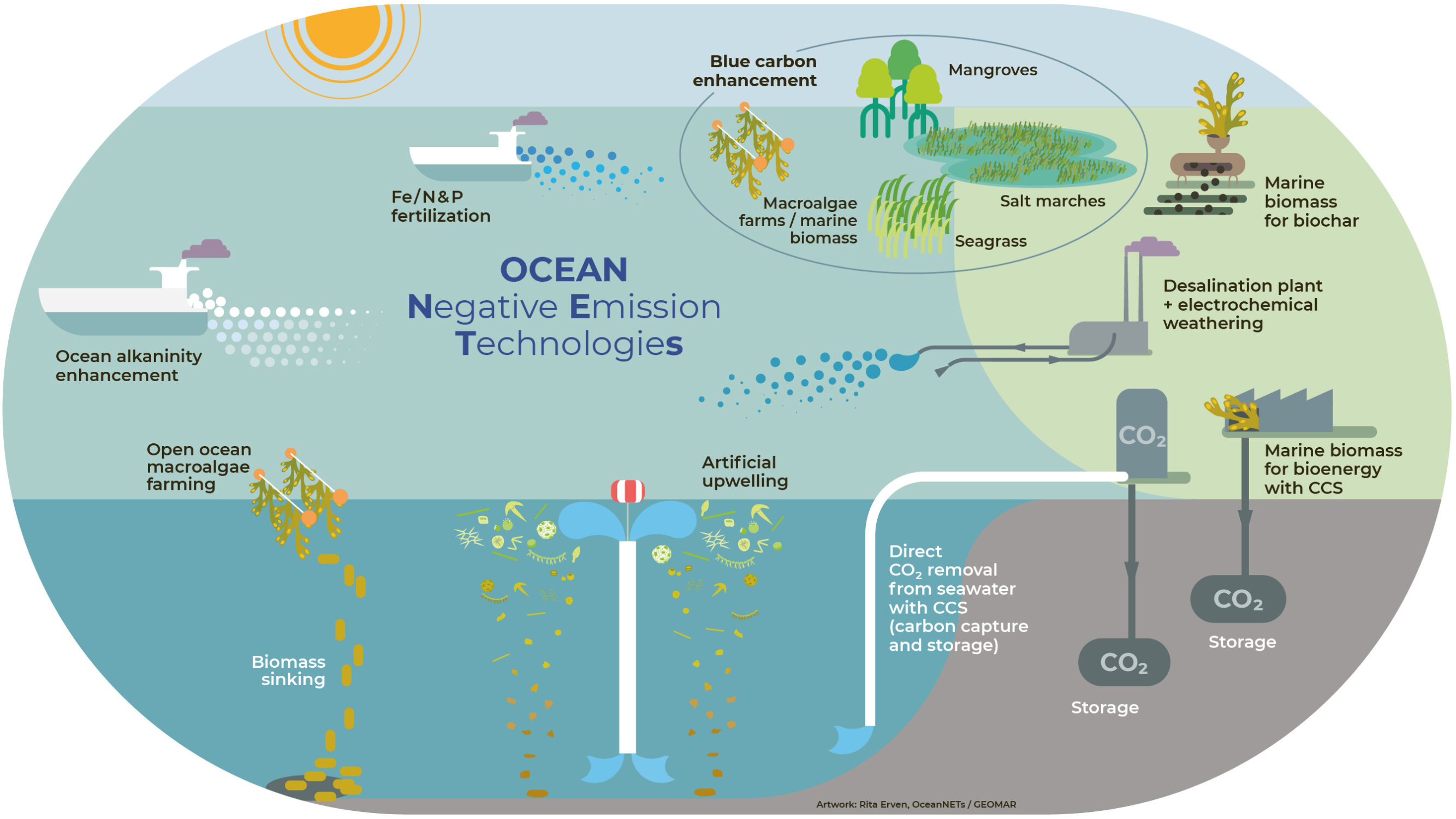

OceanNETs aims to determine to what extent, and under what conditions, the large-scale deployment of ocean-based negative emission technologies could contribute to realistic and effective pathways for Europe and the world to achieve climate neutrality and the goals established in the Paris Agreement, as well as, to identify and prioritize options with the most potential in regard to CO2 mitigation, environmental impact, risks, co-benefits, technical feasibility, cost effectiveness, and political and societal acceptance.
OceanNETs is coming to an end in June 2025.
Stay tuned for our final project synthesis report, which will summarize our key findings and insights.

Mobilizing the ocean for climate mitigation
Humanity cannot limit global warming to 1.5 °C unless much more action is taken. In addition to the primary mitigation measure of reducing emissions to nearly zero, humanity must also actively remove CO2 from the atmosphere. However, understanding of Carbon Dioxide Removal (CDR) or Negative Emissions Technology (NETs) potentials, feasibilities, and risks are limited. Up to now the research focus has mostly been on land-based NETs and much less is known about the ocean-based NETS. The OceanNETs project brings together the expertise needed to answer major open questions concerning the feasibility of using ocean-based NETs for climate stabilization.

Why focus on ocean-based NETs?
The ocean covers over 70% of the Earth’s surface, contains many times the amount of carbon in the atmosphere and terrestrial biosphere, and will be the predominant, largest long-term sink for anthropogenic CO2. These factors suggest that ocean-based NETs should have a large CDR potential.
Research on land-based NETs has suggested that achieving CDR at the scale and timelines suggested by IPCC scenarios that meet the Paris Agreement goals with land-based NETs alone, will be extremely difficult, if not impossible due to their side effects, sustainability related trade-offs (e.g., competition for land use, accelerated loss of biodiversity), limited individual potentials, and/or issues of carbon storage permanence. For many NETs, current policies, international laws, public resistance, a lack of incentives and infrastructure, justice issues, and current costs are also barriers that must be overcome.

OceanNETs will
▶ Determine the most effective ocean-based NETs with low environmental and ecological risks (e.g., to biodiversity, ecosystem services) and high co-benefits.
▶ Identify for different ocean-based NETs the degree of (and factors affecting) social and political acceptance, affordability, and societal impacts and risks (e.g., to food security, human safety).
▶ Comparatively assess ocean NETs – by combining new multi-disciplinary data, stakeholder knowledge, and case study assessments – and provide this information to society and policymakers to increase their capacity to enable and design optimal medium-to-long-term sustainable mitigation pathways.

